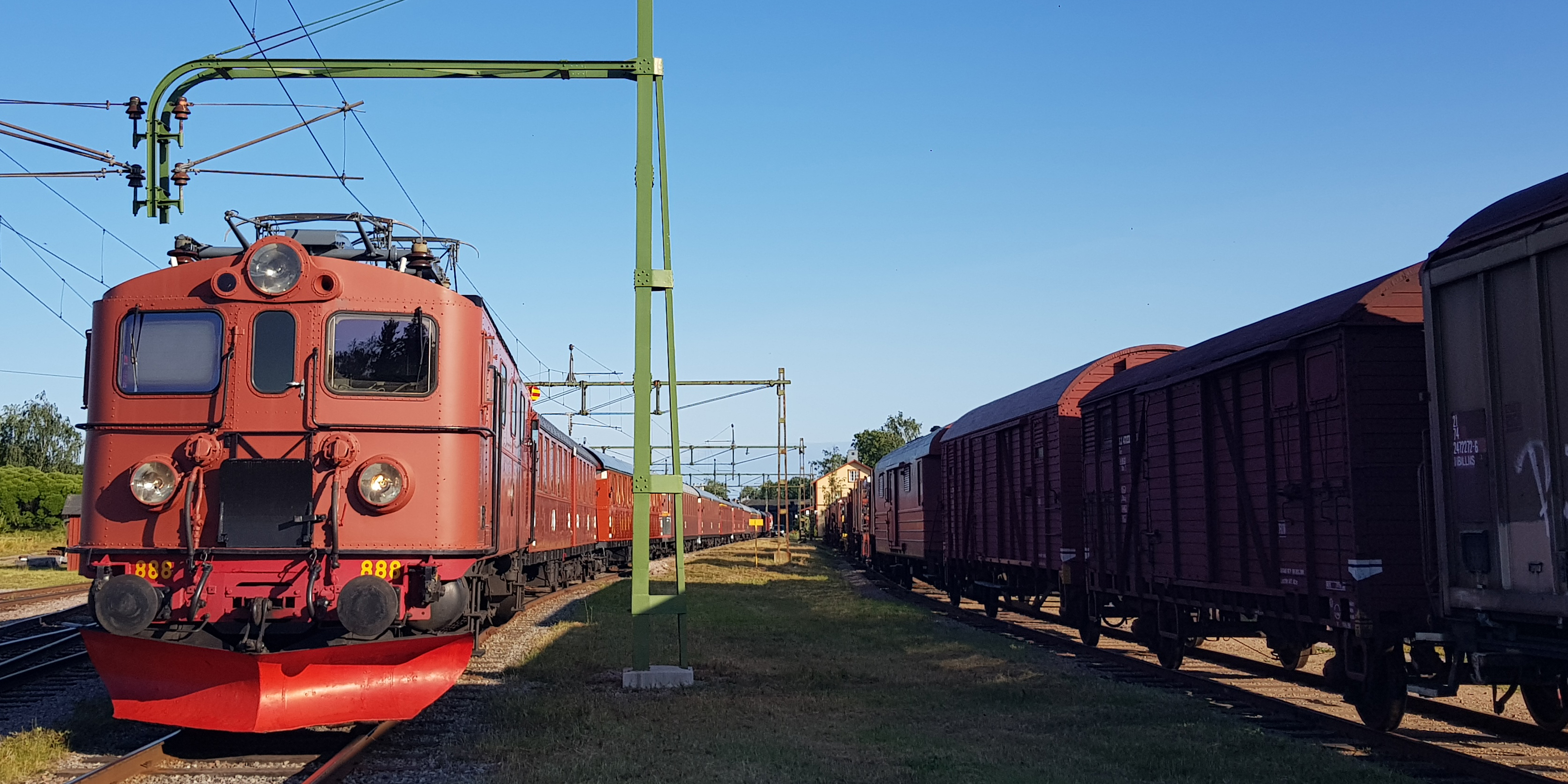
Electric locomotive Da 888
Electric locomotive Da 888 was produced by several workshops working together in 1955. This locomotive model was ordered by SJ in the 1950s and was part of a series of 93 locomotives, numbered between 790 and 941.
This model is a further development of the classic D locomotive, which was an electric locomotive first built as early as 1925. The D locomotive was a large series with several variants, with the Dm3 being built as late as 1970.
The locomotive was designed for heavy passenger or freight trains, and this model was used throughout Sweden.
A distinguishing feature of this model of locomotive is that the power from two drive motors is driven via a blind axle, i.e. a wheel that does not reach the rails, and then through coupling rods to three drive axles.
The locomotive has a robust design that makes it suitable for applications such as snow removal. It is equipped with a large plough, referred to as the “Norrland plough”, which was common when the locomotives were used on the Iron Ore Line (Malmbanan) in passenger and freight trains. The Swedish Railway Museum actually had the honour of clearing snow with locomotive 888 in the winter of 2010–2011 on behalf of the Swedish Transport Administration.
This locomotive came to the museum in the 1990s, and operates in both transport and passenger trains. It can be multi-coupled with the Da 820 locomotive, which is also owned by the museum. Multi-coupling means that two locomotives are coupled together, but are operated by a single driver from the cab of the first locomotive.
Manufactured
NOHAB, ASEA, Motala Verkstad och Vagn & Maskinfabriken in Falun, 1955
Length
13 metres
Weight
75 tonnes
Engine power
2,500 hp